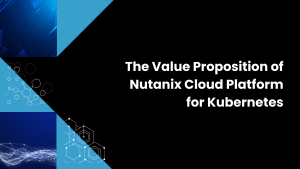![]()
Cisco, like many of its customers, in in the midst of a digital transformation. Cisco was one of the “Four Horsemen of the Internet” and is still the dominant leader in networking. But this networking world has always been measured by boxes and ports – Cisco had and still does have solid gear. What is the new measuring stick for the multi-cloud, software-defined world, and will Cisco be able to maintain a leadership position? Through 2 days of interviews on theCUBE (see it all here) at Cisco Live Barcelona 2018, it is clear that Cisco has made many changes and is self-aware of where the destination lies.
Cisco’s core switching and compute (UCS) products are key examples of the challenges of the move to a software world. On the switching side, the software (IOS operating environment at the core) has always been the critical component, yet Cisco also spends billions on proprietary chips and has huge margins on everything from the boxes down to the cables and optics. The SDN wave attempted to chip away at this dominance, and while it has put some pressure on the group, in the traditional enterprise, Cisco is still king. There are software players (most notably VMware NSX) that can be used across many hardware platforms, while Cisco’s ACI solution required Cisco kit. The latest discussion point from Cisco and others is “Intent Based Networking” (IBN) which infuses machine learning and analytics into the management of networks, with the promise of bringing together the network architect and network operator. Like SDN, there are IBN software solutions (like Apstra, which can live in a multi-vendor network and is a Cisco partner), and Cisco’s offering which is only supported on Cisco switches.
Cisco’s UCS product line was the preeminent solution for converged infrastructure, leading the market with partnerships EMC (Vblock), NetApp (FlexPod), IBM (VersaStack), and dozens more. When it came to HCI, Cisco was slow to respond, eventually OEMing and acquiring SpringPath to create HyperFlex. The leading solutions in the marketplace (VMware VSAN and Nutanix) are software solutions that can live on many hardware platforms. Similar HPE’s acquisition of SimpliVity, Cisco only offers the HCI software on its server platform. HyperFlex’s 3.0 announcement (see full interview below with Cisco’s Todd Brannon) broadens the solution to multi-hypervisor, containers, and more cloud integration.
For a quick run-through of some of the other critical areas, below is a highlight reel of some of the critical areas of transformation inside of Cisco.
- Rowan Trollope – SVP and GM of the applications division group spoke directly to the role that Cisco would play in the future. While networking is what the company is known for today, in a distributed, multi-cloud world, Cisco’s role will evolve to meet very different networking challenges.
- Michelle Dennedy – Chief Privacy Officer highlighted the critical role of data and data privacy.
- Susie Wee – VP and CTO of DevNet shared the four year transformation both internally and externally to embrace developers and build a thriving community.
- Denny Trevett – VP of Ecosystem Sales Acceleration discussed how the changing nature of Cisco’s offerings impacts partner activities
- Mandy Whaley – Director of Developer Experience explained the Net DevOps.
- Riaz Raihan – Global VP and GM of IoT expounded on how the market is now ready to deliver on the promise of IoT and where Cisco fits.
John Furrier and I did a final critical analysis (watch below or download in podcast format) of how Cisco is doing on their transformation, how real the fit is for the solutions in the multi-cloud world, and how edge is the single most important area for investment for Cisco’s future.


